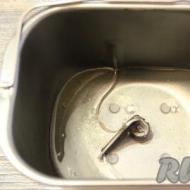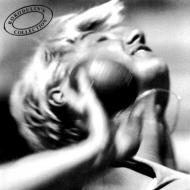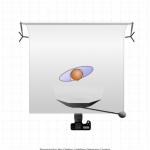
Brake tuning is a way to increase the efficiency of the braking system. Tuning car brakes in terms of safety and efficiency Features of the choice of brake units for tuning the car brake system
Increasing the power of a car always puts more stress on the braking system (although this also depends on how you drive). Consider an improvement brake system, since most motorists do not pay enough attention to this aspect. Indeed, after tuning most mechanical components, standard brakes may not be able to cope with the load.
Installing large diameter brake discs is sometimes a futile exercise. This occurs in the event of braking, when the wheels are blocked in uncontrolled rotation/sliding, or when the material from which the parts of the brake system are made is not suitable. Larger brakes require larger diameter rims(see the article on wheels), as well as all sorts of changes in the geometry of the suspension and steering. In addition, when tuning the brake system, it is important to take into account the weight of the car.
Warning: the car will eventually be braked by the tires, but first brake pads converge and block the disc, which stops spinning. The wrong type of tires will cause the car to skid during braking (see tire article). And no Anti-lock braking system brakes (ABS) will not help!
The principle of operation of the brake system
The work of the brake system is the conversion of kinetic energy (energy of motion) into thermal energy by friction. However, braking too frequently can cause damage due to the constantly high temperature, which reduces the efficiency of the braking system. For example, a car has larger brake discs on the front wheels than on the rear, or even an enlarged brake drum on the rear wheels and brake discs on the front. The point of installing powerful brakes in the front is that during braking, the weight is transferred to the front. vehicle and the rear becomes lighter. Powerful brakes on the “front” help to cope with the increased weight, and less powerful on the “stern” (due to the reduced weight) - eliminate the blocking of the rear wheels.
Worn-out parts of the brake system provoke premature destruction. Worn pads, warped discs, low brake fluid levels and leaking or torn brake hoses all contribute to an inefficient brake system. It is not difficult to guess what this will lead to in the end - to the inability to slow down at the right time (in an extreme situation or during a descent from a mountain).
Ways
The first thing to do to counter brake inefficiency is to make sure that all parts of the system that are not going to be replaced are in good condition. And then start tuning. 
If the car has already been modified (improved its performance), then insufficient cooling, improper discs or calipers, etc. may be the cause.
brake drum
Both old and modern car models have a brake drum (mostly on the rear wheels). There are several ways to improve its efficiency. For example, you can replace the regular outer drum with a ribbed one, which helps dissipate the heat resulting from the friction of the pads on it. Ribbed brake drums can be supplemented with carbon steel pads for improved friction and heat resistance (better than conventional pads). This way you can improve the braking ability of the car and reduce heat generation. Another way is to drill a few holes in the brake drum. Moreover, you need to drill not haphazardly, but in certain places to ensure good ventilation. Holes are also needed so that particles of soot and dirt can be removed through them. 
Of course, you can replace the entire set of brakes at once, especially since there are many sets for various car brands on sale now.
Brake discs
Brake discs were first patented by Friedrich Wilhelm Lanchester in Birmingham in 1902, but did not come into widespread use until the late 1940s and early 1950s.
It is recommended to install only quality discs low-grade ones won't last long. 
Types of tuning brake discs
ventilated
Majority sports cars equipped with modified brake discs, with even some subcompacts having ventilated discs as standard. The ventilated disk has a hole in the center and outwardly resembles two separate disks glued together. The hole serves as a vent, allowing air to pass through the disc as it spins and cool it at the same time. Ventilated discs are more durable. By the way, many tuning brake discs have exactly the same hole in the center. 
Perforated (with cross drilling)
Repels water, gas, cools and helps to remove dirt and carbon particles. Almost all racing cars of the late 1960s were equipped with such discs, but today sports cars are mostly equipped with slotted brake discs. Cross-drilled discs have one main drawback - over time, cracks and breaks appear around the drilled holes. In addition, small holes are clogged with dirt and soot. 
Notched
Repels water, gas and heat, aids in the removal of dirt and carbon particles, and mattifies brake pads. It is installed on sports cars mainly in order to remove dirt and soot. During operation, they make more noise than conventional ones, due to the fact that the pads rub against the grooves of the disc. 
Discs are also available today that have both corrugations and perforations at the same time. They have exactly the same advantages and disadvantages as each individual species. 
Carbon brake discs
Provide good friction, less prone to generating heat. Carbon rims are designed for sports cars, they are not quite suitable for ordinary cars, as they need to warm up well for correct operation. 
Ceramic discs
Made of carbon fiber, they are light in weight and can withstand high temperatures well. 
Possible problems with the brake disc
Deformation
The disc can warp due to the constant friction of the brake pads and high temperatures.
scratches
Usually formed from foreign objects that have fallen between the disc and pad, or as a result of sticking of the brake caliper.
Note that many aftermarket brake discs increase brake pad wear as a result of increased friction.
Caliper update
To tune the brake system, it is necessary to replace all components of the system. Caliper replacement is an important aspect of system refinement. 
The more pistons in the caliper, the more evenly the pressure is distributed on the disc during braking, thereby reducing the load on the disc and pads, as well as reducing vibration. Definitely, such calipers increase the efficiency of the braking system. Improved calipers, in addition to being lighter in weight, have another advantage - the ability to dissipate heat better than cast iron ones.
Special brake pads
Special brake pads provide better friction. In their composition, various materials and alloys, the method of heat treatment is used in the production. It is important to note that some of the components (after thermal hardening) require a certain temperature to work, and on some cars not enough heat is generated for such pads to work efficiently. In addition, even when installing special pads on heavier and more powerful vehicles, it is important to remember that they will not work correctly until they warm up. Most specialty brake pads are made from softer materials than conventional pads. But there is always a choice and the main thing is to find a compromise between performance and service life. 
brake hoses
Improved brake hoses are useful in that they help you feel better on the pedal. They have a long service life, during operation they do not expand from the pressure of the brake fluid, like rubber products. 
brake kit
If there is a financial opportunity, pay attention to sports brake kits. The set contains all the necessary parts, which also fit perfectly together. For most vehicles, it is not necessary to purchase the complete set. Basically, such kits are designed for powerful versions of cars, as well as for those that participate in races. 
Many kits come with oversized brake discs, so as noted above, larger wheels will need to be reinstalled. In addition, this can create additional difficulties associated with changing the geometry of the suspension and steering. Before buying this or that kit, it is better to ask a professional for advice.
Modification of the braking system, especially the installation of complete sets of improved braking systems, is necessary mainly for those who plan to participate in competitions, for track days, etc. In addition, such tuning will be expensive, and for normal driving on public roads and for most cars, it is not needed at all.
You can improve the braking system by replacing components from later car models of the same series. In this case, the parts may not fit and a number of improvements will be required. 
How to take care of the car after tuning the brake system
- Pay attention to the suspension settings. There may be an increase in rear-to-front load transfer when decelerating, lowering the center of gravity will help eliminate this effect (see Suspension and Chassis manual).
- You will need to adjust the offset as there is a chance of skidding and poor wheel response to steering when braking. Stability and control under heavy braking is an important factor to consider when making any changes to the braking system.
- Use only good quality brake fluid and change it regularly.
- If desired, you can increase the airflow with vents or tubes. Many sports cars have air ducts built into the front bumper/spoiler. Some of them are effective, some are not.
- Make sure that the pedal responds well to pressing, the pressure is normal.
- Make sure all parts of the brake system are installed correctly.
The latest developments for the braking system
- ABS - Anti-Lock Braking System
- ESC - Electronic Stability Control (Dynamic Vehicle Stability Control)
- Brake Assist (EBA)
- Electronic brake force distribution (system of dynamic redistribution of braking forces of the rear wheels).
- And a few more, for example, EBC, EBM, EBS, EBV.
Keep in mind that if the car has an electronic control unit, then the installation of the above systems must be done only after consulting with the master.
Recommendations
In fact, it is pointless to advise something. It all depends on what car you have. Be sure to consult with specialists and diagnose the car before modifying the brake system, as in some cases tuning the brake system is not required at all.
Are there such owners who are absolutely satisfied with everything in their car? You can relate to tuning in different ways, but is there anyone who would never want to improve head lighting, put on “music” more abruptly or add “horses” to the engine. All this is usually doable, but before you start improving dynamic characteristics your car, you should teach it ... to slow down, and do it efficiently. To pay attention to such a vital, literally and figuratively, part of the car as brakes, should also be those who are not interested in setting speed records, but are not entirely satisfied with its functioning, poor responsiveness and low sensitivity. Today we will talk about such a topic as tuning the brake system.
How the brake system works
Brakes have been used on vehicles for a long time, long before the advent of the car, and even during its existence, this system has not fundamentally changed. Let's briefly consider the structure of the car's braking system and how it works. There are 2 main parts.
1. Brake drive, which includes:
Pedal.
· The main brake cylinder (GTZ).
· Piping system.
· Amplifier.
· Wheel brake cylinders.
2. Brake mechanism, there are two types: disc and drum.
The principle of operation of the system is as follows. Pressing the brake pedal acts on the GTZ. The piston installed in it moves and increases the pressure of the brake fluid in the pipeline system connected to each wheel. The fluid presses on the caliper pistons, which press the brake pads against the disc and, due to mechanical friction, the car stops.
Reasons for the inefficiency of the braking system
What to do if the performance of the standard brake system is not satisfactory, or if work is planned to improve the performance of the car as a whole? In any case, tuning the brakes is something from which, strange as it may seem, all work must begin.
Modernization of the brake system can be carried out in different ways, based on the goals. Consider 2 typical cases: when you just need to improve the convenience and ability of the car to dampen speed for normal driving conditions, and a significant improvement in performance for lovers of dynamic driving, especially if you plan to increase engine power or increase the weight of the car.
Easy tuning
For those who prefer a relaxed driving style, but are not satisfied with how the brakes work, it may be advisable to replace the stock brake discs with larger diameter and possibly thicker models, which will help improve ventilation and cooling of the disc. Accordingly, you will have to install an enlarged caliper, because. the old one may not fit the new disk. The presence of perforations and grooves on the surface of the brake disc under normal conditions, most likely, will not give any benefit, but in difficult weather conditions, when water, dirt, anti-icing reagents, etc. get on the disc, these additional holes will help to quickly clear such mud film and restore reliable interaction between the disc and pads.
Due to the fact that a larger caliper is used, the area of \u200b\u200bcontact with the disc surface increases, which means that braking efficiency will increase. You should also choose new pads with better friction characteristics.
deep tuning
If a whole range of work is planned with the car, including refining the engine in order to increase its power, making changes to the suspension, transmission, etc., those works that lead to improvement speed indicators car, a simple replacement of disks is indispensable. speed lovers, active style driving will need sports brake systems.
Similar work is done when the mass of the car increases significantly, for example, when booking. Such modernization is also useful for escort and escort vehicles, the effectiveness of the braking system of which is important for the performance of their functions.
For such tuning of the brake system you will need:
· Install an efficient large diameter perforated brake disc with increased thickness and notches for good cooling and cleaning from mud and water film.
Install a large caliper with 4, 6, 8 or more pistons to achieve high performance due to the large contact area of the pads with the disc surface and the even distribution of their pressing force on the disc.
· Replace standard brake hoses with reinforced ones to prevent their swelling under increased pressure in the hydraulic line.
You may need to use larger wheels and tires with improved traction. Owners of powerful sports cars may consider installing ceramic discs, which are durable, lightweight and perform best at high temperatures.
What to install
For tuning the brake system, we offer to buy Frando brakes, produced for installation on many car models of all popular brands. This Taiwanese manufacturer is little known to us, but has been producing exclusively brake systems for cars and motorcycles since 1993 and has ISO-14001 and TS-16949 international certificates. This manufacturer began its journey with the production of brake systems for railway rolling stock. The kits produced by him are high-quality products, they are distinguished by a variety of models and dimensions, and a low price.
Vehicle safety
The ability of a car to accelerate quickly, to move at high speed, to be obedient in corners is important, but perhaps even more important is the ability to decelerate quickly and efficiently. The life of not only those who are in the cabin, but also those around them depends on this. Careful attention to the performance of the brake system is confidence in the car you drive, confidence in the safety of yourself and others. Even light tuning is cheaper body repair, and the costs of nerves, time and effort cannot be estimated at all. Watch your car, and let it stop by the braking system designed for this purpose.
Improving the braking system of a car is the topic of today's article. As the old saying goes, brakes were invented by a coward, but sometimes, in order to decisively and timely press the pedal, remarkable composure and driving skills are required, secured by the reliable operation of the car’s brake system. Many car owners do their own car tuning.
Power increase power unit leads to the fact that braking becomes less effective and can lead to irreparable consequences. The installation of a more powerful, disc brake system will help to correct the situation.
Why install disc brakes instead of drum brakes? Their very first advantage in design: due to the rapid cooling, disc brakes are more durable and less prone to overheating, even after a series of intense pressures at high speed.
And the option using a front brake disc and an upgraded brake caliper on the rear wheels is also much more powerful than the standard drum brake system installed by the manufacturer.
Of course, power and energy consumption are good, but the expected effect from this may not happen. Why? When braking, the front and rear mechanisms of the car are in different conditions. The car is "pressed" by the front axle, and the rear brake system is left without work.
To achieve optimal operation of the brake mechanisms, the wheels must be blocked absolutely synchronously, otherwise loss of stability and, as a result, skidding is inevitable.
The brake force regulator is responsible for equivalent wheel locking. Its job is to regulate the pressure in brake cylinders unloaded axle and prevents it from stalling and unwanted slipping.
Improving the brake system of the car - when installing a more powerful brake system, it is necessary to reconfigure the regulator. This is where the problems begin: the car slows down no better than with a regular drum system. The following happens: the brake force regulator, as it should be, evenly distributes the load on the front, weaker brakes, and the tuned rear ones, to the detriment of the latter's efficiency.
Most rational decision in this case, replacing the front brakes with more powerful ones. This will help make the system fully balanced. The result will please you, and it's not even about the braking distance.
Disc brakes have a number of advantages in addition to high power. Firstly, they are more accurate with minimal backlash and come into operation quickly.
Disc brakes are not self-tightening, unlike drums, which increase the braking force against the will of the driver, which leads to sharp, hard-to-control braking. The first thing that is noticed by those who have installed a set of disc brakes is not the increased deceleration rate, but the smoothness of braking.
Improving the braking system of the car - get used to the good, and in this case also to the safe.
Periodically, during tests of even new cars, we are faced with the fact that the regular braking system sometimes does not behave the way we would like. Simply put, there are not enough brakes. Moreover, the range of cars to which claims arise does not depend in any way on the cost and prestige of the brand - there is something to criticize for Chinese brands, and even luxury British ones. Another category of potential customers are owners of used and domestic cars, who are often willing to pay extra for better and more expensive components. It's not worth talking about professional and even street racers: they have special requirements for the characteristics of the car. As a result, it turns out that improving the brakes is a potentially demanded service. But what is it and how much is really needed? Let's try to figure this out.
There are two main tasks in tuning the braking system: increasing the braking speed and reducing stopping distance. Separate parts are responsible for each, so first of all it should be understood that improving the characteristics of the braking process is a complex procedure that requires a thorough, and therefore competent and therefore costly approach.
Depending on what we want to get at the output, we can do deep tuning of the brake system or partial. This question must be asked beforehand.
Of course, you can change the brakes in stages: first the rear, then the front. Only discs or calipers can be replaced. By and large, everything depends solely on the solvency of the customer. But, one way or another, to achieve the result, you need to change everything in the complex.
The first thing to start with is the brake discs.
Brake discs
Established are made of high-strength cast iron with a high coefficient of friction and a low degree of wear; during intensive use, for example, in a metropolis, or during regular trips along the highway, when braking, they can often overheat, which eventually lose their original characteristics, or even become unusable. Owners of powerful older machines should be especially attentive to the disks.

The modern industry offers several types of tuned brake discs, each of which has its own advantages and disadvantages.
Ventilated discs
Outwardly, such a disk resembles two separate disks glued together, separated by air vent blades. The empty space promotes ventilation by allowing air to pass through the disc as it spins, cooling it. Ventilated discs are more durable. Most often they are used when tuning the brake system. True, on modern cars Manufacturers are increasingly putting ventilated discs on a regular basis.

Perforated discs (cross-drilled)
They repel water, gas, cool and help remove particles of dirt and carbon deposits. Cross-drilled discs have one drawback - over time, cracks and breaks appear around the drilled holes. In addition, small holes are clogged with dirt and soot.

Notched
These discs repel water, gas and heat, help remove dirt and carbon particles, and matt brake pads. They are installed on sports cars - mainly in order to remove dirt and soot. During operation, they make more noise than conventional ones, due to the fact that the pads rub against the grooves of the disc.


Carbon and ceramic
Provide good friction, less prone to generating heat. Carbon rims are designed for sports cars, so they are not quite suitable for ordinary cars, as they need to warm up well to work correctly. Ceramic discs are made of carbon fiber, are lightweight and withstand high temperatures well. The disadvantage is the very high price.
But to increase the braking speed, it is necessary to increase the outer diameter of the disk. But here you should be careful: increasing the size of the disk, as a rule, leads to an increase in the size of the wheel.

According to the ratio "price - efficiency" the best option for tuning are ventilated brake discs, which, in addition to air vent blades, have both perforation and corrugation. It is worth remembering that tuning brake discs increase brake pad wear as a result of increased friction.
calipers
The more pistons (4, 6, 8) in the caliper, the more evenly the pressure is distributed on the disc during braking, thereby reducing the load on the disc and pads, as well as reducing vibration. Such calipers definitely increase the efficiency of the braking system. Improved calipers, in addition to being lightweight (made of aluminum), have another advantage - the ability to dissipate heat better than cast iron.


It is more convenient to purchase calipers along with discs and brake pads. To date, calipers with four working cylinders are considered the best - two for each pad. This causes the brakes to act instantly when the pedal is depressed. It must be understood that ventilated brake discs are wider than regular ones, and, as a result, the caliper will also be larger, which entails an increase in the diameter of the wheel, and sometimes its width. Sometimes for high-quality braking, two calipers are installed on both sides of the disc. Very often you have to change the caliper fasteners, so it’s more profitable to buy a ready-made kit for your car. And usually the pads and hoses are already included in it.
Hoses
This is a separate type of expense, because after replacing the calipers and discs, you will need to replace them too. Improved brake hoses don't expand under brake fluid pressure like rubber products, give you better pedal feel and last longer. To remove the swelling of the brake hose, it is reinforced with a thin stainless wire, which has a special very dense weave, which prevents the rubber hose from swelling from the enormous pressure generated during braking. Thanks to this, the brakes are made more predictable, the efficiency is significantly increased and the pedal responds better.

You need to select a reinforced hose of exactly the same length as the regular one: a long hose will increase braking, and a short one can simply pull out
brake pads
They can be soft, medium and hard depending on the friction material. Here everyone decides for himself: if the car participates in competitions, even in amateur ones, it is necessary to use soft pads - they wear out faster, but slow down better. Hard ones brake worse, but they have a longer life, although they wear out the disc.

Ideally, you should install pads made of medium friction material: then it will be good to brake, and the disc with pads will not wear out so quickly
Brake fluid
On the new system it is necessary to use a special brake fluid with a high boiling point - the standard one can no longer cope. Watch for disc overheating as well as wear. This is especially important at the first stage of operation.

Naturally — we must not forget about the parking brake system. Instead of a mechanical drive, you need to use a hydraulic one. Manufacturers of high quality tuning brake systems have their own production and their own scientific laboratories. Leading brake tuning companies include Brembo, DELPHI, Hamann, Nissin, Mugen and StopTech and Endless.
Sergey Vasilkov, Field Territorial Manager of the CIS countries, Brembo Russia LLC:“Practically everything we do for “civilian” cars has been previously implemented and tested in the sports segment. The issue of retrofitting the brake system on a "civilian" car must be approached with all responsibility. You must understand that all other vehicle systems are designed for standard operating conditions, and the installation of "sport" brakes leads to critical loads - we do not see the point in retrofitting.
Moreover, the installation of “sports” brakes on urban vehicles can be dangerous, since, on the one hand, this instills a sense of confidence in the driver and leads to an increase in the speed limit, on the other hand, “sports” brakes stop the car faster than all cars in the stream, and this can lead to an accident.
Thus, if you operate a car in the city and just want to be sure of the brakes, then it is most reasonable to install discs with improved characteristics, since Brembo has enough of them. These are painted discs, Brembo Max notched discs, Brembo Xtra perforated discs, floating and composite discs. And of course, to achieve the maximum effect, you need to use Brembo pads and make sure that the calipers are in perfect condition.”

For tuning monsters, prices vary from several thousand to several hundred thousand rubles for sets of brake systems, depending on the car. But do not think that the improvement of the braking system is, by definition, an extra costly undertaking. So, Brembo has already brought to Russian market product line for Lada cars, the prices for which are rather big, but quite adequate for a brand with that name.
Among the manufacturers, by the way, there are domestic brands working in this direction. These include, for example, High Performance Brakes or Carville Racing.

Maxim Atarov, Technical Manager of Federal-Mogul Motorparts Russia and CIS countries:“Ferodo has a wealth of experience in the development and production of friction compounds for competitive sports. Until the mid-80s, Ferodo was the main supplier of friction components for the Formula 1 series. Until now, the majority of sports teams in various types of competitions in auto and motor sports prefer Ferodo Racing products.
Based on friction mixtures for racing, a separate series of Ferodo DS Performance disc brake pads was created, designed for tuning regular car models. These pads are in demand by a certain category of customers who prefer a dynamic driving style. Naturally, in Russia, these products are also popular. It is quite clear that the operation of the machine with greater braking dynamics leads to more active wear of other components.

What is the bottom line?
If there is a desire to go in for motorsport even at an amateur level, then, as they say, God himself ordered. Without a reinforced braking system, success on the track is not to be seen. If there is a powerful used car available or there is a need to boost the engine, then a complete tuning of the brake system is a highly desirable action. However, as in any business, you need to know the measure and understand for what conditions and indicators this very tuning is necessary. For “civilian” conditions, this is, first of all, safety, and therefore experts do not recommend getting carried away with powerful systems.
Well, as for the offers on the market, today there are enough of them to cover all price categories. So with the right approach, you can significantly increase the efficiency of one of the most important car systems, spending not the biggest money on it.
First prehistory.
In general, it was planned to improve the brake system even immediately after I bought the car. And even most of the necessary parts were purchased and were waiting in the wings, but there was not enough time and there were also many other things to do. As a result, the brakes themselves began to give up asking for replacements. It all started with the fact that one evening, moving home late in the evening, I suddenly noticed that my path was beginning to intersect with a dog flying out of the bushes. Such a small one .. almost up to the headlights. (It was not black and I did not have any fatigue (for fans of the movie "black dog")). And before this blank for the hat, there are 10-15 meters left, soon ... As a result, having estimated that I am alone on the road with a flea, I turn the steering wheel to the left and pull the handbrake, squeeze the clutch ... I put the car sideways and leads me to the oncoming lane where I stopped ... To put it mildly, the doggie, without even thanking him, dumps his business from the scene. I take off the handbrake, take the back one, take my lane and drive further to the house. Current I notice that the car behaves incomprehensibly. It resets as it quickly speed, the couple pulls to the side. He stopped, the wheel did not seem to be pierced and figs with him. I mean I'll get home. Approaching the house already drove through a puddle, and stopped almost immediately. I get out of the car, and steam comes from the rear wheel. I'm in shock, it's like this, I'm trying the drum with my hand and pulling my hand back, it's not sickly so... You can't even take the wheel disk with your hand. Well, now I think it’s clear why the car led to the side and she dumped it faster. And the funny thing is that in the morning you go to judge the competition and it is on it to go and pick up people. As a result, in the morning I went ... after driving 20 kilometers, the car, after the next bump, went easier ... Let me go. But the brakes feel worse. Already then decided that everything. It is necessary to deal with the brakes closely ... They even appointed a day ... in a week and a half it turned out. Until that time, the handbrake was abolished. And then came the evening before the day when it was planned to start work. In the morning, it was planned to drive from one side of the city to the other, pick up a friend and colleague in the DPS Garage, Pashka, and go with him for welding, which was necessary for work, then again through the whole city and back to the garage. Also had to buy brake lines and some bolts. Everything else was... And then morning came. Satisfied, I jumped into the car, started it and went straight, out of habit I checked the brakes. (I ADVISE EVERYONE TO TAKE A RULE!!!) And the pedal once, and left, and the machine rolls ... I'm shocked "fuck it funny." Lano don't care, I'll get to Pashka anyway. I arrived neatly, but what to do then, you need to weld, you have to go. By traffic jams. On the ascents, we reached the place, took the welding and went down the tin, what a steep descent ... And most importantly, when we climbed there, the cops caught the speed of those descending. Well, I think, damn it, we will set a record for them. Lano don't care. Third, squeezed the clutch and rolled .. typing 80 released the clutch and the car somehow quickly dropped to 40-50 .... The driver at the back of the check obviously did not expect this and barely slowed down. Roaring the engine, we got to the end of the descent, where there were no more gays, went to the garage ... Inspection, during the dismantling of the brakes, showed that the brake hose was hard, on the front right wheel it was just bitten with something. But it was already do not care. Work has begun! Having dumped everything that was required for reworking the brakes on the hood, and later shifted everything necessary to the workbench, namely ...
1) brake mechanisms 2112 as an assembly or caliper and caliper separately (on the right and on the left side)
2) brake discs 14 ventilated (2 pcs)
3) brake hoses 01 with bolts and copper rings (2 sets)
4) Caliper guides (4 pcs)
5) Brake pads
6) Litol
7) Brake fluid. (1 - 1.5l)
8) Bolts with nuts as needed and desired
9) Hub bolt (2pcs)
10) Adapter plates

... started dismantling the front brakes. 
Having disassembled the front brakes down to the bare steering knuckle and painted the components ... 

...began to assemble new brakes. Screwing the faceplate to the steering knuckle immediately inserted into it the lower caliper mounting bolt. It needs to be done about necessarily, otherwise you will have to disassemble everything later, then you won’t insert it already. 
The next step was to install the old hub. Before installation, it had to be well lubricated with lithol. Then contract. 
Further, when the hub was restored and in place, they threw on brake pancakes, a spacer and twisted the guides. 
Next, it was the turn of the brakes.
We immediately unscrew the native "tenth" hoses and fasten the classic ones through the classic bolt. Otherwise, there is a high probability that the brake hose will be interrupted or torn in motion while the suspension is working and cornering. 
If you have any doubts about which caliper to put on which side, then the answer is simple. The bleed screw must be at the top. They will stand up and vice versa, of course, but you won’t pump such a system. Simply, do not remove the air. (photo below - an example of how not to assemble) At first, we assembled it just wrong and were surprised for a long time (we were very tired that day ... driving without brakes is really annoying) 
Well, when you assemble and throw in the brake pads 
then get something like this 
And then we pump the system and get high! There is only one BUT! Disks are now needed only from 14 diameters and above!
After 14 brake pancakes and "twelfth" mechanisms were installed, and a complete alteration of the brake system was waiting for the machine in front, it was decided to install the main working cylinder and vacuum booster from VAZ-2108. The solution, of course, does not shine with novelty, but it is very effective. The stumbling block was the adapter bracket for 08 VUT and, accordingly, 08 GTZ along with it. The fact is that on the classic that comes with the VUT, the clutch master cylinder is located at a greater distance from the brake assembly than on the old classic system. Hence the problem with installing an adapter for the field for the eighth vacuum cleaner, and, accordingly, the problem of attaching this vacuum cleaner to 01 classics. Having searched in vain for the subject through the collapse and the correct drawings in the internet, we decided to stir up our own. For there was no time to wait and look for something, and this time was running out. The first step was to remove the native master cylinder 
As you can see in the photo below, the mount on the classic old stock is much different from what is on the 08 VUT. On the classic, on the left, on the brake pedal there is a pin on which the GTZ drive rod is put on. At 08, the system is different. There is a Y shaped loop that wraps around the pedal. And tightened with a bolt through it. 
Confused here is such a product. It will serve as a spacer. For our transitional house warps on bolts (in the photo they are to the left of the spacer) fastening the pedal assembly, and everything is smooth with it. 
The bearing part was cut off from the regular 08 VUT mount. The rest is in the trash. 
Also, the reciprocal part was cut out of metal. Drilled holes in the places where the pins stick out under the standard GTZ. 
Well, then, cutting 4 corners and adjusting them, they began to weld them. 
Well, actually the first fitting. she is the last one. everything fit perfectly 
The product was primed immediately. 
Well, then screwed on seats to the VUT bracket and the bracket itself to the Body. 
First of all, having measured how much it does not reach the stem on the pedal, they chopped the old GTZ drive 
Having cut off one ear on the 08 vacuum cleaner, they welded an old loop to it. Having fixed the house on the car, they began to twist and put on our mount on the pedal. After some time, the result was achieved. 
Next, we connected the brake pipes to the front wheels. Rear silenced
The length of the regular tubes is not enough, so you should immediately keep in mind that you need almost the same length, only 30 centimeters longer.
The next step was to make a hydraulic handbrake. It was expensive to buy. We decided to make it from the clutch master cylinder and the handbrake handle of the eighth or tenth family. The cylinder was selected from UAZ. It has a larger volume and will be able to pump the tenth brakes at the rear (which were the next step in reworking the brakes). We complicated the task for ourselves by the fact that we also had to embed a brake force regulator (front / rear) into the brake system. and it was decided to primostyrit together with gidroruchnik. After examining the designs of the existing units and taking measurements, we first sketched a preliminary drawing. 
Having cut off a plate of the required length and width from a sheet of metal, they began to saw it into its component parts. The result is 4 parts. Lower. The part on which the GCC is attached, the part on which the handbrake is attached, and there was also a small piece of metal that served as a plate for attaching the force distributor. 

When all the parts were ready separately, they welded them together and tried them on for the first time. Again, everything matched perfectly. 
Everything fit perfectly, so we immediately strengthened the structure by welding the plates on the sides. 
They also remade the drive on the clutch cylinder under the handle of the coachman. 
Well, the final touch - they connected the regulator and the GCC with a brake pipe and found an adapter from UAZ pipes to VAZ pipes. Having ennobled all the components of our product, they brought everything together. 
Hydromanicure is ready!
The rest is just to fix in the cabin as it is convenient. We did it like this. 
The final step in the re-equipment of the brake system was the installation of rear disc brakes. A preliminary study of Internet forums and conversations with the owners of these devices gave the result. The coordinates of Mikhail Elfimov (ladaclub.vrn.ru/modules.p...le&mode=viewprofile&u=279) were obtained from whom I purchased the transitional faceplates. 
The stumbling block was that it was necessary to machine the axle shafts in order to put pancakes on them. There were 2 options. Either pull out the axle shafts and give it to the machine, to some master, or a grinder and ingenuity. The second option was chosen, since it was impossible to immobilize the machine, and the faceplates are made in such a way that they provide installation without removing the axle shaft. The last feature is good in that it greatly facilitates the process of re-equipment in terms of time and labor costs.
No sooner said than done. Arriving at the garage, they threw off the wheels and removed the drums, then they dismantled all the offal. 
After that, they began to grind off the axle shaft with a Bulgarian. A small note: turning the left side - cut in the back, turning the right side - cut any of the 5 gears. 
Soon the half shaft was ready. For example, you can compare the photo of the axle shaft at the time of parsing standard brakes. 
Having cut off the standard protection, we started assembling. Having picked up the bolts along the length, and having slightly edited them, they pulled a faceplate to the axle shaft (with small protrusions to be placed on the left, with large protrusions on the right). 
Next, the brake disc was fitted and the clamps were also screwed in. 
The next bolted element turned out to be a bracket. 
Well, in the wake of her came the turn of the caliper and pads. I advise you to immediately twist the hose that comes with the caliper and screw the native classic hose in its place. 
Well, that's actually all on this front. Put on a wheel and everything. 
Next, under the car and connect the new brakes on the system. 
We pump everything and go to try. If you do not have a brake force regulator. Then you have to grind the brake pads from the sides so that the rear does not overbrake.
P.S.: If you want to repeat the above and you have any doubts and questions, please do not be shy and ask these questions. NO JOKING WITH BRAKES!

















